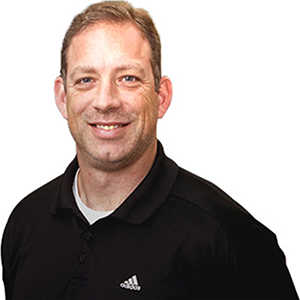Muscle strength is an important factor for aging well, but it might not be quite as important as you think. Muscle power—the ability to generate force quickly (force x speed)—may actually claim the top spot. Research studies that have compared the contribution of muscle strength and power to the performance of numerous functional activities consistently conclude that power is the more important of the two.
Of course, strength and power are obviously related and you really can’t have one without the other. We are, however, talking about a potentially powerful (no pun intended) paradigm shift in training older clients. If muscle power really is the key to remaining functional as we age, traditional strength-training approaches that focus on “slow, controlled” resisted movements need to be adjusted so that there is less of a focus on load (force) and more of a focus on movement speed.
It is true that even traditional strength training can improve muscle power because, of course, the very definition of power includes force-production capabilities. However, because speed is held in check, the effects on power are limited at best. Again, numerous research studies have demonstrated that high-speed, loaded movements can maximize muscle power and may have a greater impact on functional abilities compared to slow-speed strength training.
Some studies suggest that the speed component may be even more important than the force-production component for maximizing function. Performing high-speed movements at loads as low as 20-40% of one-repetition maximum (1RM) may have more advantages (for functional outcomes) compared to training at typical loads of 70-90% of 1RM. This is pretty exciting, because lower loads are tolerated better by older individuals who often have osteoarthritis or other joint conditions. Furthermore, there is a perception by the users that the exercises are easier (based on ratings of perceived exertion, or RPE).
Power training for older adults, however, does not mean powerlifting (cleans, jerks, etc.). It simply means performing a loaded movement quickly. While some older adults may be able to perform powerlifting, the risk outweighs the reward for most clients. Lifts, throws and jumps are a classic way to categorize power movements and I would add one more: Starts/Stops. These are all viable options for improving power in older clients.
If you are interested in implementing more power training into the programs of your older clients, here are a few guiding principles to consider:
- Perform the concentric part of the movement “as fast as possible” with a focus on explosiveness.
- Perform the eccentric part of the movement “slow and controlled” with a focus on proper loading and form.
- Increasing the speed of any movement means less control and more movement error, so don’t sacrifice good form for speed.
- A good preparation tool is to have clients perform a movement at increasing speeds so you can gauge their abilities before having them do it “as fast as possible.”
- When doing any plyometric exercises, make sure you teach clients how to land properly.
- Always make safety a priority, so have spotters nearby and use an open space free of clutter.
- Most selectorized-style machines are not appropriate for power training due to issues with inertia and momentum. Therefore, it is better to use body weight, elastic tubing, free weights (kettlebells, dumbbells, medicine balls) or water as resistance.
Here are some power exercises you can use with your clients:
Power Stands to Hops to Jumps
- Power Stand (for lower-level clients): Sit in a chair with arms folded across the chest. Stand up as quickly as possible (without jumping) and then slowly return to the seated position. Once fully seated in the chair, stand up again as quickly as possible.
- Hops (for middle-level clients): Hop forward over a line with a focus on moving both feet together, getting a few inches off the floor, and landing softly.
- Jumps (for higher-level clients): This can be performed with or without a chair. Teach proper landing form through the hops first. Squat down into a “loaded” position and then explode up toward the ceiling while raising the arms overhead. Land softly, reset foot position and repeat.
Bug Stomps to Power Lunges
- Bug Stomps (for lower-level clients): From a standing position, step out with one foot and “stomp” on the floor as if smashing a large bug. Return to the starting position and “stomp” in a slightly different direction. The goal is to move as quickly as possible and transfer body weight onto the “stomping” foot.
- Power Lunges (for middle- and higher-level clients): This movement is similar to the Bug Stomp, but involves stepping farther away into a full lunge pattern. Focus on explosively pushing off the lead foot to return to the starting position.
Red Light, Green Light (for all levels)
Line up clients along one wall. When you call out “green light,” they are to take off as quickly as possible (speed walking only). When you say “red light,” they are to stop as quickly as possible. Focus on the “stomping” skill practiced in the Bug Stomp and Power Lunge exercises so that they stop forcefully and suddenly without having to take any unnecessary gather steps.
Up and Go (for all levels)
Sit in a chair in a “ready” position (staggered stance with hands on thighs, leaning forward slightly). On the command “go,” take off out of the chair into a speed walk. You can have clients walk a certain distance, sit down in another chair, maneuver around a cone and return to the same chair, or whatever combination you can come up with. Focus on the quick explosion and acceleration out of the chair.
You can learn more about how to train older adults of diverse physical abilities and ages to help them maximize physical and cognitive function in the Functional Aging Specialist course.


